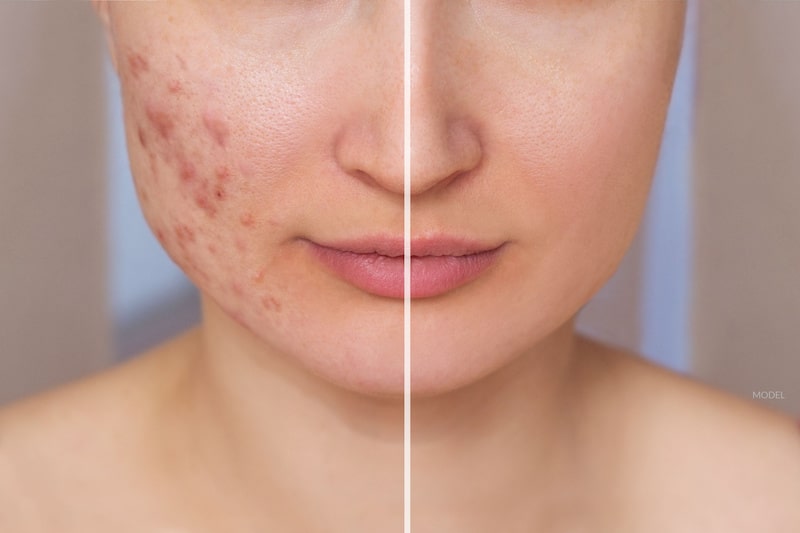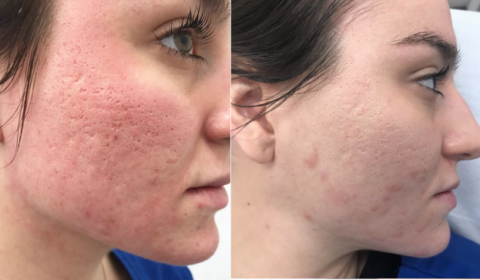Acne and Acne Scars Treatment: Professional Solutions for Lasting Results
Acne and Acne Scars Treatment: Professional Solutions for Lasting Results
Blog Article
Discovering Skin Problem: Identifying and Treating Acne Scars for Healthier Skin
Acne scars represent a considerable problem for people seeking to maintain healthy skin, as they can affect both appearance and self-worth. Recognizing the various types of scars, from atrophic to hypertrophic, is vital for establishing ideal therapy choices. While expert treatments like chemical peels and microneedling can be reliable, the value of customized treatment plans can not be overstated. In addition, preventative measures play an important function in lessening future scarring. As we check out these aspects, one need to think about exactly how the best approach can lead to transformative outcomes.
Recognizing Acne Marks

The body's natural recovery procedure can lead to either atrophic scars, which look like depressions in the skin, or hypertrophic scars, which are elevated and arise from overflow of collagen. Additionally, the mental toll of acne marks need to not be ignored; many individuals report sensations of shame, anxiousness, and decreased self-esteem. This emotional problem can influence social communications and overall top quality of life.
Resolving acne marks requires an extensive understanding of their formation and effect. Understanding of the capacity for long-lasting effects linked with neglected scars can motivate individuals to seek suitable treatments. Early intervention and effective administration methods can significantly improve skin appearance and enhance emotional strength, stressing the relevance of recognizing the intricacies surrounding acne scars.
Types of Acne Scars
Acne scars can be categorized right into distinctive kinds, each displaying special characteristics and calling for details treatment methods. acne scars treatment. The main kinds of acne scars include atrophic, hypertrophic, and keloid scars

Hypertrophic marks, in contrast, are increased over the skin level and are the result of too much collagen production throughout the healing process. They commonly stay within the borders of the initial acne lesion. Keloid marks are similar yet extend beyond the initial injury website, forming larger, elevated locations that can be itchy or excruciating.
Comprehending these sorts of marks is vital for picking appropriate treatment choices. Various marks may react far better to details therapies, such as laser treatments, fillers, or medical treatments, emphasizing the value of a tailored technique to acne mark management.
Determining Your Scars
When evaluating the look of your skin, it is important to properly determine the kind of scars existing, as this will certainly notify the most reliable treatment method. Acne marks typically fall under 2 categories: hypertrophic and atrophic scars. Atrophic scars, which are one of the most typical, look like clinical depressions or impressions on the skin. These can better be categorized right into ice-pick marks, boxcar scars, and rolling scars, each showing distinct attributes and calling for different techniques for analysis.
Hypertrophic scars, on the various other hand, are elevated and take place as a result of extreme collagen manufacturing throughout the recovery procedure. Identifying the specific features of your scars-- such as depth, width, and texture-- is essential for correct identification (skin rejuvenation treatments). Additionally, consider the distribution of marks throughout your skin, as this can show the extent and period of the acne problem
Engaging with a dermatologist can offer important insights right into the nature of your scars, aiding in the differentiation in between numerous types. An extensive understanding of your scars will ultimately lead to an extra customized and effective therapy plan, guaranteeing a more clear and much healthier complexion.
Therapy Alternatives Readily Available
Recognizing the click for info specific sort of acne scars existing on your skin lays the foundation for exploring effective therapy options. Usual kinds of acne marks consist of atrophic (clinically depressed), hypertrophic (raised), and post-inflammatory erythema.
For atrophic marks, options such as chemical peels, microneedling, and laser resurfacing are extensively utilized. Chemical peels make use of acids to eliminate the outer layer of skin, advertising new cell development. Microneedling includes little needles that produce micro-injuries, stimulating collagen production. Laser resurfacing targets damaged skin cells, enhancing texture and tone.
Hypertrophic marks can be treated with corticosteroid injections to flatten the mark or laser therapy to lower inflammation and boost appearance. Silicone gel sheets and pressure dressings might also aid in managing increased scars.
In addition, facial fillers can temporarily fill out depressions from atrophic scars, while medical excision may be proper for extreme cases. Each therapy alternative has its factors to consider and benefits, making it important to seek advice from with a skin specialist. They can supply personalized suggestions based upon the kind and intensity of your scars, in addition to your skin kind and total health.
Tips for Prevention
Reliable avoidance methods can dramatically reduce the possibility of developing acne scars. Making use of non-comedogenic items aids stop stopped up pores, which can worsen acne.
Preventing the urge to pop my sources or pick acne sores is crucial, as this can bring about much deeper skin damage and enhance the risk of scarring. Rather, take into consideration making use of a chilly compress or over the counter treatments to reduce swelling and soreness.
Sunlight security is another essential element of prevention; ultraviolet (UV) rays can darken marks and impede the healing procedure. Applying a broad-spectrum sun block with a minimum of SPF 30 daily can safeguard the skin and advertise also healing.
Last but not least, maintaining a well balanced diet plan rich in minerals, antioxidants, and vitamins sustains skin health and wellness and healing. Remaining moisturized and handling stress levels can also play a substantial duty in decreasing acne flare-ups. By applying these techniques, individuals can substantially reduce their chances of developing acne scars.
Conclusion
In final thought, understanding and determining acne marks is essential for efficient treatment and attaining much healthier skin. Various types of acne scars, including hypertrophic and atrophic marks, demand details interventions tailored to individual requirements.
The body's all-natural recovery procedure can result in either atrophic marks, which show up as clinical depressions in the skin, or hypertrophic marks, which are elevated and result from overflow of collagen. They are more separated right into three subtypes: ice pick scars, boxcar marks, and rolling marks. Acne scars typically fall into two classifications: atrophic and hypertrophic marks. These can further be classified More Info into ice-pick scars, boxcar marks, and rolling marks, each displaying unique attributes and needing different methods for analysis.
Numerous kinds of acne scars, including atrophic and hypertrophic marks, demand certain interventions tailored to individual needs.
Report this page